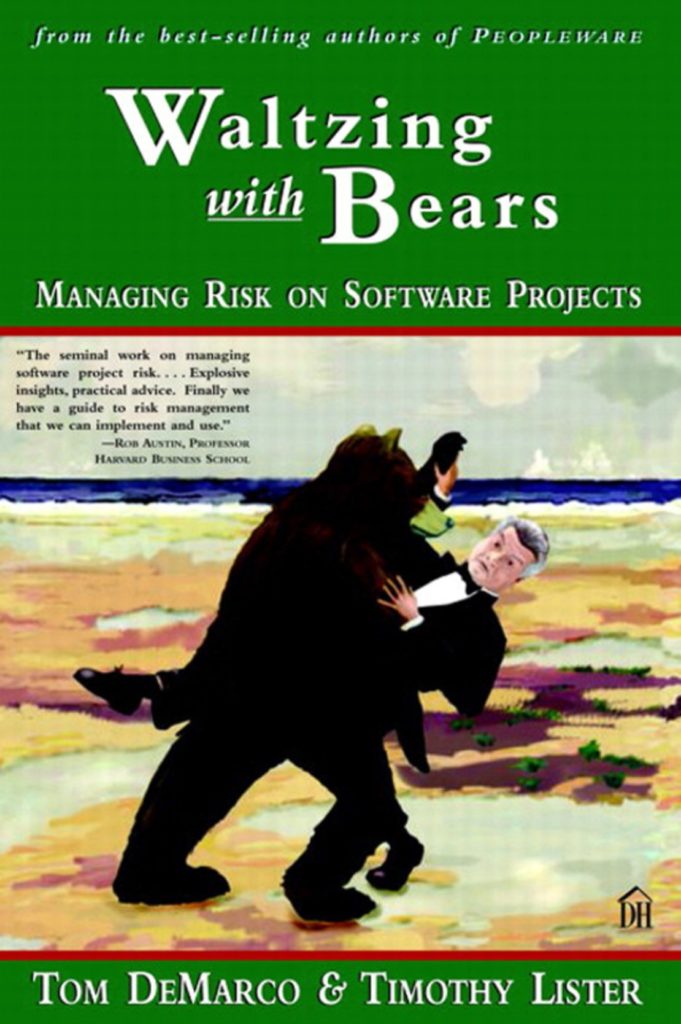Waltzing with Bears is one of my favorite reads. It has become essential reading for anyone leading projects. It’s honest and pragmatic, providing evidence for the need and power of good risk management for project planning.
Rating
(Higher is better, 5 is neutral)
- Would I recommend? 10 / 10
- Did I learn anything? 9 / 10
- Did I learn anything I can apply? 9 / 10
- High Information density? 10 / 10
- Would I re-read? 8/10
Buy Waltzing with Bears on Amazon

Waltzing with Bears Overview
Waltzing with Bears takes us through the journey of Managing Risk on Software Projects. It starts out analyzing what Risk really is and why it matters. Then it transitions into demonstrating what we can do about it, how to talk about it, tools we have, mitigation methods, and common pitfalls. It shows how analysis of risks & their probabilities can inform the probability curve of delivering a project
Ultimately Waltzing with Bears advocates for being open & honest about what on a project we can control, thinking about what risks we can mitigate, and how we can more realistically plan projects while including uncertainty.
Who should read Waltzing with Bears?
Every Project Manager, Product Manager, Head of Engineering, and Senior Engineer. It will shift how you think of projects and give you the tools to stop guessing about projects and start projecting realistic projects.
My main takeaways
Don’t ignore project risks. Risks make us more self aware and not count on ‘luck’ or ‘stars to align by chance’. We can eliminate a good portion of guess work.
We can use math to quantify risk asses its probability of impact on a project delivery dates or outright failure.
Deadlines dates are a bit of a myth. Instead a distribution confidences for completion is more realistic when Planning Projects and Road Maps.
Just because you wish / hope / believe that things will go perfectly, doesn’t mean they will.
If you did no diligence in checking for risks, and a project goes perfectly, you are just as guilty as someone who knew of risk and did nothing about them. See Ethics of Beliefs.
5 most common items that impact software project timelines: Scheduling Flaw (ill informed project timeline), Requirements Inflation (additional unplanned work), Turnover (staff leaving), Specification Breakdown (ignoring agreeing upon what/how key items are built), Under Performance (low/high throughput by team).
Riskology Worksheet is a great way simulate these risks impacts on a project.
If you liked this book, next I’d recommend
On team culture: Debugging Teams


